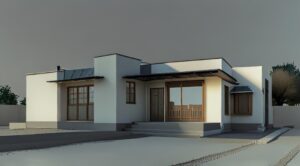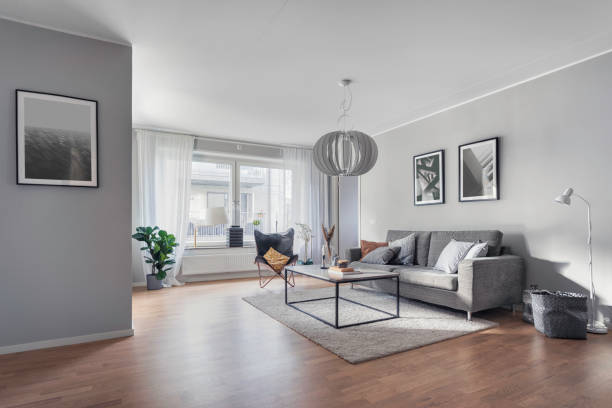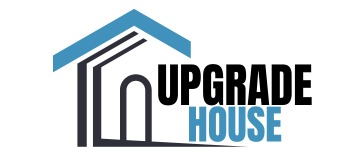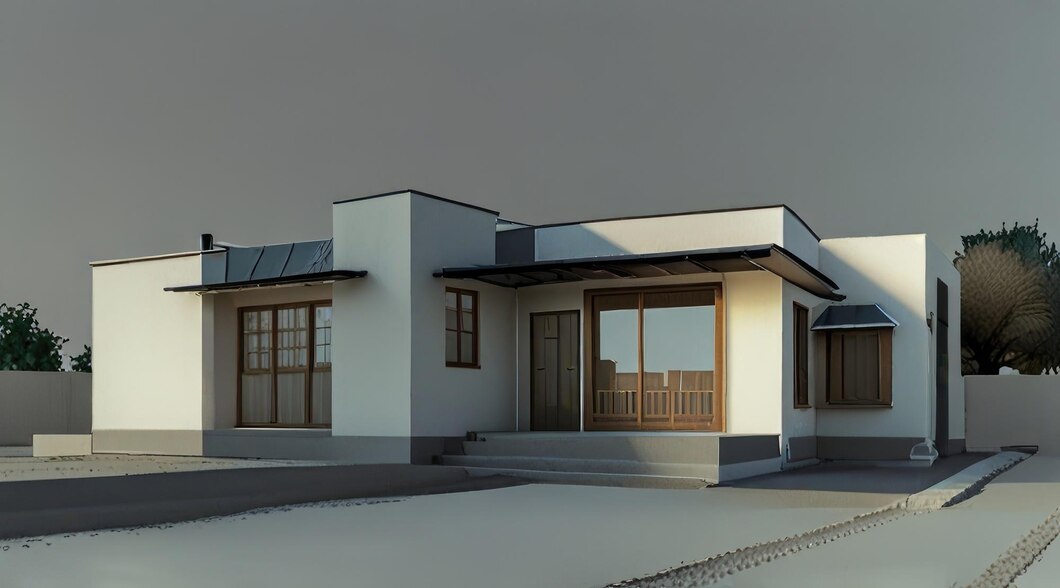
Explore the essence of a Simple:0lec2y2mhza= House through our comprehensive guide. Learn about minimalist design, efficient layouts, and sustainable practices in creating your perfect home.
Introduction
A simple house embodies the principles of minimalism, functionality, and efficiency. Embracing a straightforward approach, it emphasizes practicality over extravagance. This guide explores the core aspects of a simple house, providing insights into its design, construction, and benefits. By understanding these elements, you can appreciate the value and appeal of a simple house and how it aligns with modern living.
Minimalist Design
Minimalist design forms the cornerstone of a Simple:0lec2y2mhza= House, emphasizing clean lines and uncluttered spaces. This design philosophy focuses on eliminating excess and highlighting essential elements. By embracing a minimalist approach, a simple house achieves a serene and harmonious environment. The design incorporates basic forms and functional features, creating a visually appealing yet practical living space. With minimalist design, a simple house achieves elegance through simplicity, proving that less truly can be more.
Efficient Layout
An efficient layout is crucial in a simple house, ensuring that every square foot is utilized effectively. Open floor plans often characterize simple houses, merging living spaces to create a sense of openness and fluidity. This layout promotes ease of movement and accessibility, making the home more functional and user-friendly. By optimizing the arrangement of rooms and spaces, a simple house enhances daily living and reduces unnecessary barriers. The result is a home that is both practical and welcoming, designed with efficiency in mind.
Affordable Materials
Cost-effective materials play a significant role in the construction of a simple house. By choosing affordable yet durable options, homeowners can achieve a balance between budget and quality. Materials such as concrete, metal, and engineered wood offer durability without compromising on aesthetics. These choices ensure that the home remains resilient and low-maintenance while keeping construction costs manageable. Affordable materials contribute to the overall practicality of a simple house, reflecting a commitment to sensible and sustainable building practices.

Reducing Environmental Impact
Energy efficiency is a key consideration in the design of a simple house, aiming to minimize energy consumption and environmental impact. Incorporating features such as high-quality insulation, energy-efficient windows, and solar panels can significantly reduce utility costs. These elements work together to create a home that is not only eco-friendly but also cost-effective. By prioritizing energy efficiency, a simple house contributes to a sustainable lifestyle and supports efforts to reduce carbon emissions. This approach aligns with modern values of environmental responsibility and energy conservation.
The Benefits of Smaller Living Spaces
The compact size of a simple house offers numerous benefits, from reduced maintenance to lower utility costs. Smaller homes are easier to clean and maintain, saving time and effort for homeowners. Additionally, a compact size often leads to lower energy consumption, further enhancing the home’s efficiency. The manageable scale of a simple house fosters a cozy and intimate atmosphere, making it a comfortable and inviting space. Embracing a smaller footprint allows for a more focused and purposeful living experience.
Functional Aesthetics
Functional aesthetics are integral to the design of a simple house, merging practicality with visual appeal. The emphasis is on creating a space that is both beautiful and useful, with a focus on essential elements. This approach highlights the natural beauty of materials and design features, showcasing the elegance of simplicity. Functional aesthetics ensure that every aspect of the home serves a purpose, contributing to a harmonious and cohesive living environment. The result is a space that is visually pleasing and highly functional.
Sustainable Practices
Sustainability is a key consideration in the construction of a simple house, reflecting a commitment to environmental stewardship. Sustainable practices include using eco-friendly materials, implementing energy-efficient systems, and incorporating green technologies. These practices contribute to a lower environmental impact and promote long-term resource conservation. By adopting sustainable methods, a simple house aligns with modern values of environmental responsibility and supports efforts to protect the planet. This forward-thinking approach ensures that the home is both environmentally friendly and future-ready.
Creative Solutions for Small Areas
Space optimization is essential in a simple house, where every inch counts. Creative solutions such as built-in storage, multifunctional furniture, and clever layout designs can maximize the usability of small areas. By implementing these strategies, homeowners can enhance the functionality of their space without sacrificing comfort or style. Space optimization ensures that a simple house remains practical and adaptable, catering to the needs of its inhabitants. This approach highlights the importance of thoughtful design in creating a comfortable and efficient living environment.

Budget-Friendly Solutions
Cost-effective living is a hallmark of a simple house, reflecting a focus on affordability and practicality. By choosing budget-friendly materials, efficient construction methods, and energy-saving features, homeowners can achieve a comfortable living space without overspending. This approach emphasizes the value of sensible choices and highlights the benefits of living within one’s means. Cost-effective solutions contribute to the overall appeal of a simple house, making it an attractive option for those seeking financial and practical efficiency.
Open Spaces
Open spaces are a defining feature of a simple house, promoting connectivity and flow between different areas. By eliminating unnecessary walls and barriers, an open layout creates a sense of freedom and openness. This design approach fosters a more fluid and interactive living experience, where spaces seamlessly integrate and enhance communication. Open spaces contribute to the overall functionality and aesthetic appeal of a simple house, creating an environment that is both inviting and engaging.
Practical Design Elements
Practical design elements are crucial in a simple house, ensuring that the home meets the needs of its occupants. Features such as ample storage, efficient lighting, and easy-to-maintain surfaces contribute to a functional and user-friendly living space. These elements are designed with everyday use in mind, enhancing the overall convenience and comfort of the home. By incorporating practical design elements, a simple house achieves a balance between form and function, making it a comfortable and practical place to live.
Minimalist Decor
Minimalist decor plays a significant role in a simple house, contributing to a calm and orderly environment. By focusing on a few key pieces and avoiding clutter, minimalist decor creates a serene and visually appealing space. This approach emphasizes the beauty of simplicity and highlights the importance of thoughtful design choices. Minimalist decor ensures that the home remains uncluttered and harmonious, fostering a sense of peace and tranquility. The result is a living space that is both stylish and calming.
Smart Home Features
Smart home features enhance the functionality of a simple house, integrating technology with traditional design principles. Features such as smart thermostats, automated lighting, and security systems contribute to a more convenient and efficient living experience. These technologies offer practical benefits without compromising the simplicity of the home’s design. By incorporating smart home features, a simple house achieves a modern and innovative edge while maintaining its core values of practicality and efficiency.

Illuminating the Space
Efficient use of natural light is a key aspect of a simple house, enhancing both its aesthetic and functional qualities. Large windows, skylights, and strategic placement of openings allow natural light to flood the space, creating a bright and inviting atmosphere. This approach not only reduces the need for artificial lighting but also contributes to the overall energy efficiency of the home. By maximizing natural light, a simple house achieves a warm and welcoming environment, fostering a connection with the outdoors.
Flexibility and Adaptability
Flexibility and adaptability are important considerations in a simple house, allowing the home to evolve with the needs of its occupants. Design features such as movable partitions, adaptable furniture, and multifunctional spaces contribute to the home’s versatility. This adaptability ensures that the home can accommodate various uses and lifestyles, making it a practical choice for families and individuals alike. By embracing flexibility, a simple house remains relevant and functional over time, adapting to the changing needs of its inhabitants.
Promoting a Positive Living Environment
Health and well-being are central to the design of a simple house, reflecting a commitment to creating a positive living environment. Features such as good ventilation, natural light, and non-toxic materials contribute to a healthier and more comfortable space. By prioritizing these aspects, a simple house supports the physical and emotional well-being of its occupants, fostering a sense of overall wellness. This approach underscores the importance of a well-designed living space in promoting a healthy and fulfilling lifestyle.
Investing in a Timeless Home
The long-term value of a simple house is evident in its timeless design and practical features. By focusing on quality materials, efficient construction, and sustainable practices, a simple house offers lasting value and durability. This investment in a well-designed and functional home ensures that it remains relevant and desirable for years to come. By considering the long-term benefits, homeowners can appreciate the enduring appeal and practicality of a simple house, making it a valuable and worthwhile investment.

Practical Tips for Designing a Simple House
Designing a simple house involves several practical considerations to ensure its effectiveness and appeal. Start by prioritizing functionality and efficiency, focusing on essential features that enhance daily living. Choose durable and cost-effective materials that align with the home’s design principles. Incorporate natural light and smart home features to improve the overall living experience. By following these tips, you can create a simple house that meets your needs and reflects your values.
Conclusion
A Simple:0lec2y2mhza= House represents a commitment to minimalism, functionality, and efficiency. Its design emphasizes practicality and elegance, creating a living space that is both comfortable and visually appealing. By embracing the principles of a simple house, homeowners can achieve a harmonious and sustainable living environment. The enduring appeal of a simple house lies in its ability to meet essential needs while reflecting modern values of efficiency and simplicity.
Read Also: Kitchen Remodeling Houston Transform Your Space with Top Experts





